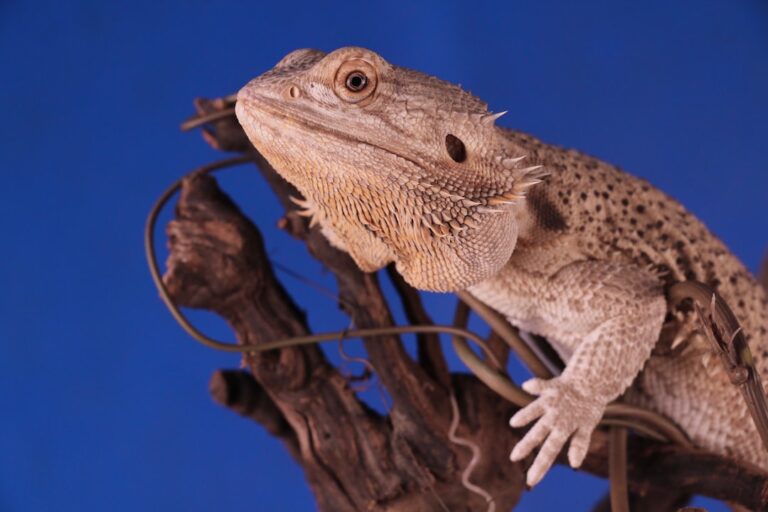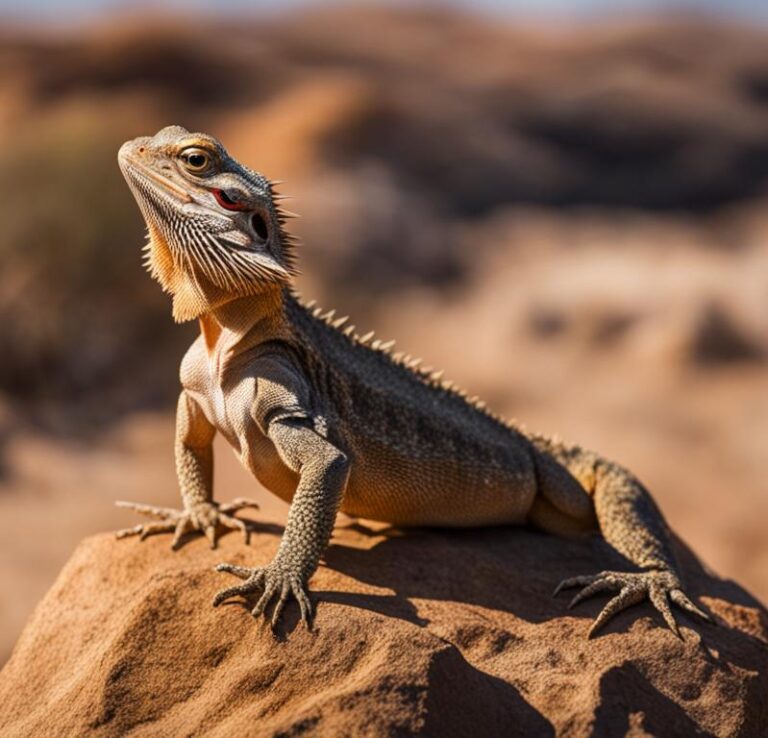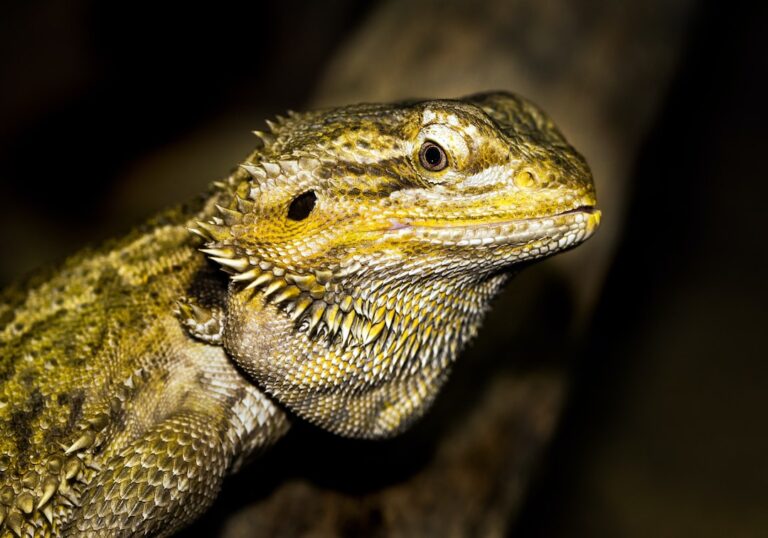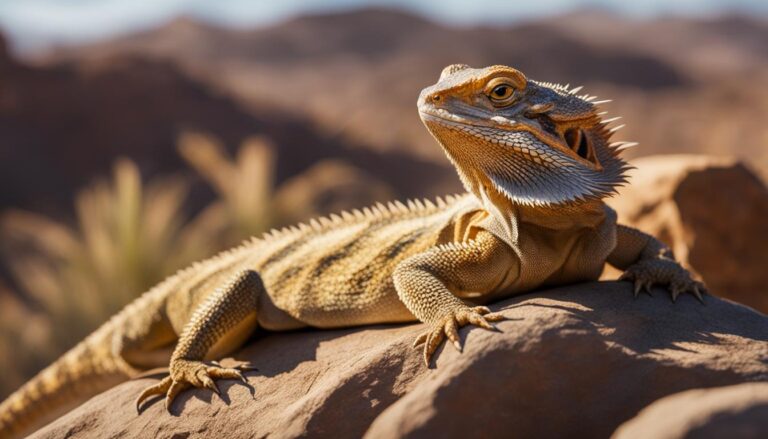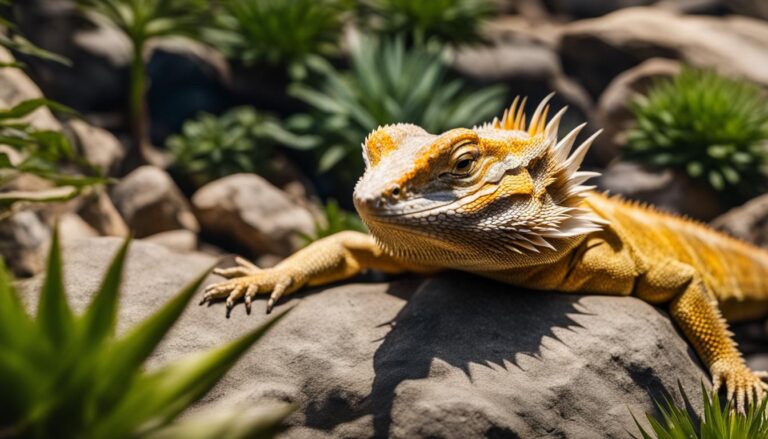Are Bearded Dragons Ticklish?
Ticklishness is a fascinating phenomenon that is often associated with mammals, but did you know that reptiles can also experience ticklish sensations? In this article, we will explore the science behind ticklishness in reptiles, with a specific focus on bearded dragons. Understanding ticklishness in these creatures is important for their overall well-being and can help us better care for them as pets.
Bearded dragons are popular reptile pets known for their docile nature and unique appearance. They have become increasingly popular in recent years, and as more people bring these fascinating creatures into their homes, it is crucial to understand their needs and behaviors. Ticklishness is one aspect of their sensory experience that can greatly impact their overall quality of life.
Table of Contents
The Science Behind Ticklishness in Reptiles
Ticklishness is a neurological response to certain types of touch stimuli. When we are tickled, our brain sends signals to our muscles to contract involuntarily, resulting in laughter or squirming. This response is thought to be a protective mechanism that evolved to help us detect and respond to potential threats on our skin.
Research on ticklishness in reptiles is still in its early stages, but studies have shown that reptiles do exhibit similar responses to touch stimuli. However, the neurological process behind ticklishness in reptiles may differ from that in mammals. While mammals have specialized nerve endings called C-tactile fibers that are responsible for the ticklish sensation, it is not yet clear if reptiles have the same type of nerve endings.
Do Bearded Dragons Have Nerve Endings That Respond to Touch?
To understand if bearded dragons can experience ticklishness, we need to examine their sensory system. Bearded dragons have a well-developed sense of touch, with specialized nerve endings located throughout their body. These nerve endings allow them to detect changes in temperature, pressure, and texture.
Research on nerve endings in bearded dragons has shown that they have a high density of mechanoreceptors, which are responsible for detecting touch. These mechanoreceptors are found in the skin and are connected to sensory neurons that transmit signals to the brain. This suggests that bearded dragons do have nerve endings that can respond to touch stimuli.
How to Determine If Your Bearded Dragon is Ticklish
Now that we know bearded dragons have nerve endings that can respond to touch, how can we determine if they are ticklish? There are several signs that may indicate ticklishness in these reptiles. For example, if your bearded dragon squirms or moves away when you touch certain areas of its body, it may be ticklish.
To test your bearded dragon’s ticklishness, you can gently stroke different parts of its body and observe its response. Pay attention to areas such as the belly, armpits, and tail base, as these are often more sensitive. If your bearded dragon shows signs of discomfort or tries to move away when you touch these areas, it may be ticklish.
It is important to note that not all bearded dragons will respond the same way to tickling. Factors such as their individual temperament and previous experiences with touch can influence their response. Some bearded dragons may enjoy being tickled and show signs of pleasure, while others may find it uncomfortable or even stressful. It is crucial to respect your bearded dragon’s boundaries and adjust your interactions accordingly.
The Role of Socialization in a Bearded Dragon’s Tactile Sensitivity
Socialization plays a significant role in a bearded dragon’s response to touch and overall tactile sensitivity. Bearded dragons that have been properly socialized from a young age are more likely to tolerate and even enjoy human touch. Regular handling and interaction with their owners can help them become accustomed to different types of touch stimuli and reduce their sensitivity to tickling.
Handling and interaction are also important for bearded dragons’ mental and emotional well-being. These reptiles are social creatures and thrive on social stimulation. Regular interaction with their owners can help prevent boredom and loneliness, which can lead to stress and other health issues.
To socialize your bearded dragon for optimal tactile sensitivity, start by gently handling it for short periods every day. Gradually increase the duration and intensity of the touch as your bearded dragon becomes more comfortable. Be patient and observe your bearded dragon’s body language to ensure it is not becoming stressed or overwhelmed.
Understanding the Difference Between Ticklishness and Pain in Bearded Dragons
It is essential to differentiate between ticklishness and pain in bearded dragons, as they may exhibit similar behaviors in response to touch. While ticklishness is a pleasurable sensation, pain is a sign of discomfort or injury. It is crucial to be able to recognize the signs that your bearded dragon may be experiencing pain instead of ticklishness.
Signs that your bearded dragon may be experiencing pain include flinching, hissing, or biting when touched, changes in appetite or behavior, and visible signs of injury or illness. If you suspect that your bearded dragon is in pain, it is important to consult a veterinarian who specializes in reptile care for a proper diagnosis and treatment.
To differentiate between pain and ticklishness, pay attention to your bearded dragon’s overall behavior and body language. If it shows signs of pleasure, such as relaxed body posture, closed eyes, or even licking its lips, it is likely experiencing ticklishness. However, if it shows signs of discomfort or distress, such as tensed muscles, wide eyes, or defensive behavior, it may be experiencing pain.
The Benefits of Tickling Your Bearded Dragon
Tickling your bearded dragon can have several benefits for its physical and mental health. Tickling can stimulate blood circulation and lymphatic flow, which can promote overall health and well-being. It can also help improve muscle tone and flexibility, as the involuntary muscle contractions associated with ticklishness can act as a form of exercise.
Tickling your bearded dragon can also strengthen the bond between you and your pet. Regular positive interactions, such as tickling, can help build trust and create a positive association with human touch. This can make handling and care easier in the long run, as your bearded dragon will be more comfortable with your touch.
To incorporate tickling into your bearded dragon’s daily routine, start by gently stroking its body with your fingertips. Pay attention to its response and adjust the intensity and duration of the touch accordingly. Some bearded dragons may enjoy being tickled with a soft brush or feather, while others may prefer a gentle massage with your hands. Experiment with different techniques to find what your bearded dragon enjoys the most.
How to Avoid Overstimulating Your Bearded Dragon’s Ticklish Spots
While tickling can be enjoyable for bearded dragons, it is important to avoid overstimulating their ticklish spots. Overstimulation can cause stress and discomfort, leading to negative associations with touch and potentially damaging the bond between you and your pet.
Signs that your bearded dragon may be overstimulated include increased aggression or defensive behavior, attempts to escape or hide, or changes in appetite or behavior. If you notice any of these signs, it is crucial to give your bearded dragon a break from tickling and allow it to relax.
To avoid overstimulating your bearded dragon’s ticklish spots, pay attention to its body language and response during tickling sessions. If it shows signs of discomfort or stress, such as tensed muscles or attempts to move away, stop the tickling and give it some time to calm down. Respect your bearded dragon’s boundaries and adjust your interactions accordingly.
The Evolutionary Purpose of Ticklishness in Reptiles
The evolutionary purpose of ticklishness in reptiles is still a topic of debate among scientists. Some theories suggest that ticklishness may have evolved as a form of self-defense, helping reptiles detect and respond to potential threats on their skin. Ticklishness may have allowed them to quickly identify and remove parasites or other irritants from their bodies.
Another theory proposes that ticklishness may have played a role in social bonding among reptiles. Tickling and playful interactions are common among many species, including mammals and birds, and can help strengthen social bonds within a group. It is possible that ticklishness in reptiles served a similar purpose, promoting social cohesion and cooperation.
Understanding the evolutionary purpose of ticklishness in bearded dragons can help us better understand their natural behaviors and needs. By providing them with opportunities for social interaction and play, we can help fulfill their natural instincts and promote their overall well-being.
Comparing Ticklishness Across Different Reptile Species
Ticklishness can vary between different reptile species, as each species has its own unique sensory system and behaviors. While research on ticklishness in reptiles is still limited, studies have shown that some species, such as turtles and crocodiles, exhibit similar responses to touch stimuli.
For example, turtles have been observed to retract their limbs or heads when touched in certain areas, suggesting a ticklish response. Crocodiles have also been observed to exhibit similar behaviors when touched on their sensitive spots.
Understanding ticklishness in a variety of reptile species is important for their care and well-being. Each species may have different ticklish spots or preferences when it comes to touch stimuli. By observing and learning from these behaviors, we can provide better care for reptiles in captivity and ensure their needs are met.
Debunking Common Myths About Ticklishness in Bearded Dragons
There are several common misconceptions about ticklishness in bearded dragons that need to be debunked. One common myth is that tickling can cause stress or harm to bearded dragons. However, when done correctly and in moderation, tickling can actually have several benefits for these reptiles, as discussed earlier in this article.
Another myth is that bearded dragons do not have nerve endings that respond to touch. As we have discussed earlier, bearded dragons do have specialized nerve endings called mechanoreceptors that allow them to detect touch stimuli.
It is important to rely on scientific evidence and accurate information when caring for bearded dragons or any other pets. By debunking these myths, we can ensure that bearded dragons receive the proper care and attention they need.
Understanding ticklishness in bearded dragons is crucial for their overall well-being and can help us provide better care for these fascinating creatures. While research on ticklishness in reptiles is still in its early stages, studies have shown that bearded dragons have nerve endings that can respond to touch stimuli.
By observing their behaviors and body language, we can determine if our bearded dragons are ticklish and adjust our interactions accordingly. Socialization and regular handling are important for their tactile sensitivity and overall mental and emotional well-being.
Tickling your bearded dragon can have several benefits, including promoting physical health, strengthening the bond between you and your pet, and providing mental stimulation. However, it is important to avoid overstimulating their ticklish spots and respect their boundaries.
By understanding the evolutionary purpose of ticklishness in reptiles and debunking common myths, we can provide better care for bearded dragons and ensure their needs are met. Caring for a ticklish bearded dragon can be a rewarding experience, and with the right knowledge and approach, we can create a positive and enriching environment for these amazing creatures.
If you’re curious about the fascinating behaviors of reptiles, you might also be interested in learning about why do iguanas bob their heads. This article explores the reasons behind this peculiar behavior and provides insights into the communication methods of these reptiles. To find out more, check out http://reptilefriend.com/why-do-iguanas-bob-their-heads/.


